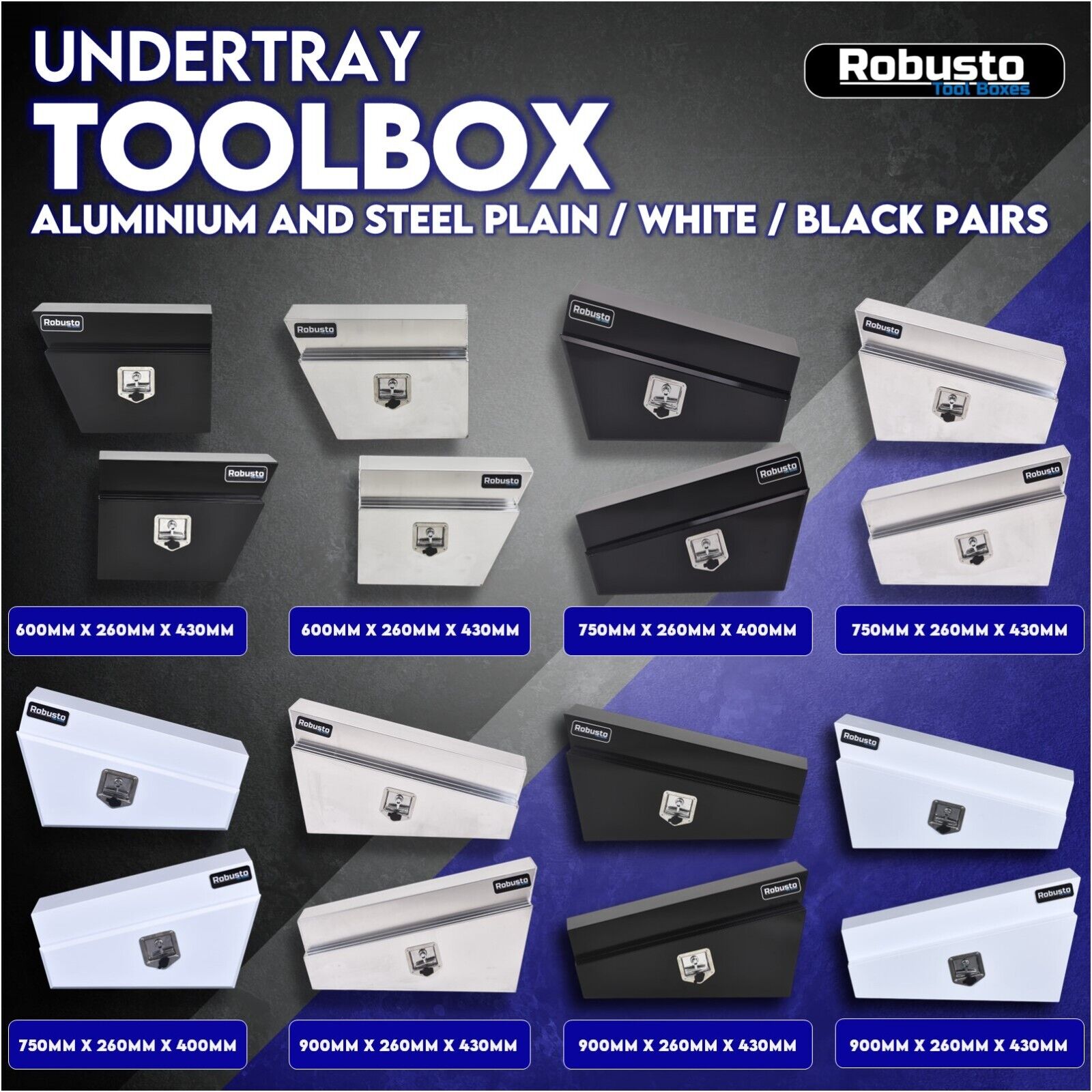When it comes to under tray tool boxes, one size certainly does not fit all. Getting the right size for your vehicle is not just a matter of convenience; it's a necessity. This comprehensive guide will explain the significance of choosing the right under tray toolbox size for vehicle compatibility.
Before we dive into sizing, let's establish a clear understanding of what under tray tool boxes are and why they matter. These boxes, typically made of durable materials like aluminum or steel, serve as storage capacity for your tools and equipment. Their location under your vehicle provides easy access and keeps your tools secure and protected.

Why Vehicle Compatibility Matters
Vehicle compatibility is crucial because an inappropriate under tray tool box can lead to a host of problems. Here's why it matters:
Safety Concerns:
- An improperly sized tool box can affect the balance and stability of your vehicle, potentially leading to accidents.
- Overloading a tool box with a weight capacity exceeding your vehicle's limits is a safety hazard.
Damage to Your Vehicle:
- A tool box that's too large might scrape against the road, causing damage to both the box and your vehicle.
- An undersized tool box might not secure your tools properly, leading to damage during transit.
Inefficiency:
- Choosing the wrong size can make accessing your tools inconvenient, defeating the purpose of having storage space for your tools.
Factors to Consider When Sizing
Now that we understand why vehicle compatibility is vital, let's explore the key factors to consider when sizing your under tray tool box:
Size Matters:
- Accurate measurements of the available space under your vehicle are essential.
- Ensure the dimensions of the tool box align with the space available without obstructing other components.
Weight Capacity:
- Check your vehicle's weight capacity and select a tool box that falls within this limit.
- Overloading can lead to poor vehicle performance and safety hazards.
Vehicle Type:
Different vehicles have unique under tray spaces. Consider the type of vehicle you have (truck, van, trailer) when selecting a toolbox.
Purpose:
Determine what you'll store in the toolbox. Some tools and equipment require specific dimensions or compartments.
Measuring Your Vehicle
To get the perfect fit, follow these steps for accurate measurements:
- Measure the width and length of the available space under your vehicle.
- Consider the height between the under tray and the ground. Ensure the tool box won't scrape against the road.
- Account for any protrusions or irregularities in the under tray space.
Matching the Right Size
Now that you have your measurements, it's time to match them with available under tray tool box sizes. Keep in mind that sizes may vary between manufacturers and models. Look for a toolbox that aligns closely with your measurements and vehicle type.
Common Sizing Mistakes to Avoid
Avoid these common errors when sizing your under tray tool box:
- Guessing the measurements without measuring accurately.
- Ignoring the weight capacity leads to overloading.
- Failing to account for protrusions or irregularities in the under tray space.
Tips for Optimal Fit
For the best fit and performance:
- Double-check your measurements.
- Prioritize weight capacity and stay within your vehicle's limits.
- Consider custom options if standard sizes don't match your needs perfectly.
Sizing your under tray tool box for vehicle compatibility is a crucial step in ensuring safety, efficiency, and functionality. Make an informed decision that improves your vehicle's efficiency and keeps your tools secure by taking into account the size, weight capacity, vehicle type, and purpose. Make the smart choice and enjoy the benefits of a compatible toolbox for your vehicle.
Ready to find the perfect under tray tool box for your vehicle? Explore our variety of high quality under tray tool boxes and discover the ideal fit for your needs. Don't compromise on safety and efficiency – choose the right size today to have extra storage for your tools.

